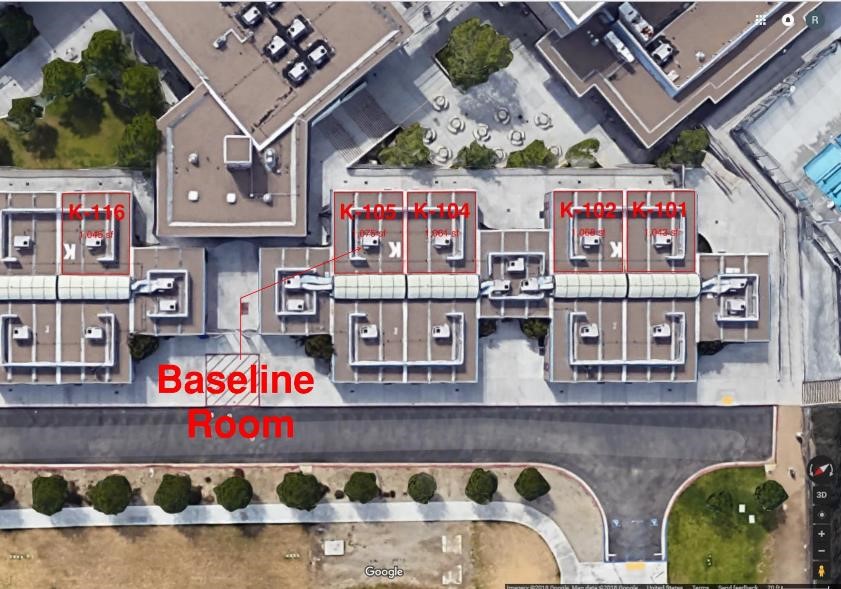 Project Title
Project Title
Phase Change Material Drop-Ceiling Application in Schools
Project Number ET17SDG1021 Organization SDG&E End-use Whole Building, HVAC Sector Commercial, Public Project Year(s) 2017 - 2018San Diego Gas & Electric's Emerging Technologies (ET) program performed a measurement & verification (M&V) study of Phase Change Material (PCM) for commercial customers. PCM was studied in a high school classroom setting. This high school is located in climate zone 10 with the closest weather station being Riverside, CA.
The PCM was installed in the drop ceiling of 4 classrooms with 1 classroom serving as a baseline room (without PCM). Each room was served by a 12-year old, 5-ton Carrier model 48HJD006 rooftop packaged AC unit, and each room was roughly the same size, with the same occupancy level, space temperature control schedule, and set-points for the duration of the study. Figure 1 below shows the size and location of each room at the high school site. As seen from Figure 1, K-105 is the baseline room with no PCM installed and the rest of the rooms have PCM installed in the drop ceiling.
Analysis of the percent runtime and total energy consumption of the compressor is the best way to show how the PCM affects the energy consumption of the unit because the PCM is meant to reduce the cooling load. During a normal working schedule, the PCM should be at its maximum efficiency because the space will be occupied, and the packaged unit will be running during the day. In this case, review between the hours of 6:20 am and 3:00 pm were given in the following scenarios: daily, 5-day work week and 5-day work week excluding holidays. The 5-day work week excluding holidays allows a side-by-side comparison with all the spaces equally occupied during the time period. During this scenario, the percent compressor runtime of the packaged unit with PCM installed compared to the baseline room was reduced by 7.55%, and the total energy consumption of the compressor was reduced by 7.24%.
To check the performance in ideal conditions, the first three weeks of testing from September 18th to October 6th were observed because the outside air temperature fluctuations occurred around the melting temperature of 73˚F. In these three weeks, it is clear the runtime and energy consumption of the compressor is reduced on average by 7.80% and 11.57%, respectively (kWh/minutes/kW). These savings are likely due to the free cooling ability of the PCM. If the compressor is using less energy, then there should be an overall reduction in internal heat load, which based on the assumptions of similar occupancy of the baseline and retrofit rooms can be attributed to the addition of the thermal mass of the PCM. This internal heat is heat that is meant to be rejected by mechanical cooling, not the total internal heat load. However, those savings are minimal and would not result in a cost-effective energy efficiency measure with a payback of 37 years.
